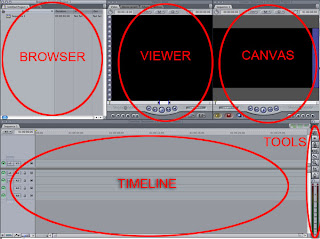Looking back at your preliminary task, what do you feel you have learnt in the progression from it to the full product?
- Reflecting back towards my initial planning stages I feel I have learnt from my Preliminary task; and furthermore progressed from being a consumer to becoming a producer of media products, I have understood how theorist have shaped the way we view and consume media and through this process have grasped many ideas and concepts.
- The preliminary task has achieved its purpose it teaching me elementary media techniques such as editing, basic camera work and mise en scene … without this I would be unable to advance to higher skill level, in producing media text.

· Throughout the preliminary stages I have learnt about how media is represented, and crucially the importance of preparing pre-production paperwork especially before filming. This has made me understand the details in which film makers and producers have to consider and has now placed me in their mind set; as in the filming industry planning is key in completing a filming project;not only
did a plan correspond with each step I took in making the
film it also constructed a clear idea of how I was going
to edit.
· I am now more efficient in planning and have learnt from
my preliminary paper work that planning is a practical way
to direct my self when filming, I am more focused and
have a clear understanding of what my next steps will
be; as thinking and planning ahead was key in developing
a well formulated media product.
· I have also progressed in how I view texts, in that I have a better knowledge, of how the film & media industry validate most theorist's objections, of how the film industry follows generic conventions, take Mulvey's theory of how characters are formed to fit a generic pleasure known as the male gaze where women are subjected to only be looked at, and how a man is the only figure of bravery, everything is seen from his view point, I challenged this concept in my media product by not involving any stereotypes in gender roles; by letting the mise en scene speak for itself.
my preliminary paper work that planning is a practical way
to direct my self when filming, I am more focused and
have a clear understanding of what my next steps will
be; as thinking and planning ahead was key in developing
a well formulated media product.
· I have also progressed in how I view texts, in that I have a better knowledge, of how the film & media industry validate most theorist's objections, of how the film industry follows generic conventions, take Mulvey's theory of how characters are formed to fit a generic pleasure known as the male gaze where women are subjected to only be looked at, and how a man is the only figure of bravery, everything is seen from his view point, I challenged this concept in my media product by not involving any stereotypes in gender roles; by letting the mise en scene speak for itself.
- I have progressed from using amateur editing software, to displaying an advanced skill level in using professional editor’s software, which has allowed me learn how to think similar to one. From having a basic skill set in demonstrating camera work.
- To progressing in being able to use technology to form a complex piece of media text (my title sequence). I have learnt that there are many complexities in media’s technology; and how socially people are consuming media through networking. Additionally how different types of media texts like film can viewed in many different ways.
- From my preliminary task I have learnt to become more decisive in how I produce my work; and to be more conclusive in what I feel needs discarding, what can be kept, and what can be improved. I feel I have progressed from my initial preliminary stages and have become more efficient in how I work, from having an amateur mind set, to enhancing to thinking like a producer, who has produced an end media product up to a consumer’s level.



























